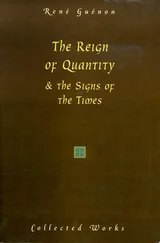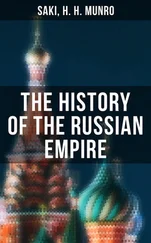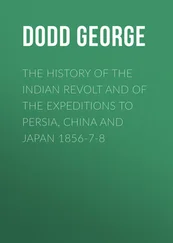[8] Bernaldez, Reyes Católicos, MS., cap. 30.—Pulgar, Reyes Católicos, part. 2, cap. 78.
[9] "Era muy inclinada," says Pulgar, "á facer justicia, tanto que le era imputado seguir mas la via de rigor que de la piedad; y esto facia por remediar á la gran corrupcion de crímines que falló en el Reyno quando subcedió en él." Reyes Católicos, p. 37.
[10] Pulgar, Reyes Católicos, part. 2, cap. 97, 98.—L. Marineo, Cosas Memorables, fol. 162.
[11] Ordenanças Reales de Castilla, (Burgos, 1528,) lib. 2, tit. 3, ley 31.
This constitutional, though, as it would seem, impotent right of the nobility, is noticed by Sempere. (Hist. des Cortès, pp. 123, 129.) It should not have escaped Marina.
[12] Lib. 2, tit. 3, of the Ordenanças Reales is devoted to the royal council. The number of the members was limited to one prelate, as president, three knights, and eight or nine jurists. (Prólogo.) The sessions were to be held every day, in the palace. (Leyes 1, 2.) They were instructed to refer to the other tribunals all matters not strictly coming within their own jurisdiction. (Ley 4.) Their acts, in all cases except those specially reserved, were to have the force of law without the royal signature. (Leyes 23, 24.) See also Los Doctores Asso y Manuel, Instituciones del Derecho Civil de Castilla, (Madrid, 1792,) Introd. p. 111; and Santiago Agustin Riol, Informe, apud Semanario Erudito, (Madrid, 1788,) tom. iii. p. 114, who is mistaken in stating the number of jurists in the council, at this time, at sixteen; a change, which did not take place till Philip II.'s reign. (Recop. de las Leyes, lib. 2, tit. 4, ley 1.)
Marina denies that the council could constitutionally exercise any judicial authority, at least, in suits between private parties, and quotes a passage from Pulgar, showing that its usurpations in this way were restrained by Ferdinand and Isabella. (Teoría, part. 2, cap. 29.) Powers of this nature, however, to a considerable extent, appear to have been conceded to it by more than one statute under this reign. See Recop. de las Leyes, (lib. 2, tit. 4, leyes 20, 22, and tit. 5, ley 12,) and the unqualified testimony of Riol, Informe, apud Semanario Erudito, ubi supra.
[13] Ordenanças Reales, lib. 2, tit. 4.—Marina, Teoría de las Cortes, part. 2, cap. 25.
By one of the statutes, (ley 4,) the commission of the judges, which, before extended to life, or a long period, was abridged to one year. This important innovation was made at the earnest and repeated remonstrance of cortes, who traced the remissness and corruption, too frequent of late in the court, to the circumstance that its decisions were not liable to be reviewed during life. (Teoría, ubi supra.) The legislature probably mistook the true cause of the evil. Few will doubt, at any rate, that the remedy proposed must have been fraught with far greater.
[14] Ordenanças Reales, lib. 2, tit. 1, 3, 4, 15, 16, 17, 19; lib. 3, tit. 2.—Recop. de las Leyes, lib. 2, tit. 4, 5, 16.—Pulgar, Reyes Católicos, part. 2, cap. 94.
[15] Oviedo, Quincuagenas, MS.—By one of the statutes of the cortes of Toledo, in 1480, the king was required to take his seat in the council every Friday. (Ordenanças Reales, lib. 2, tit. 3, ley 32.) It was not so new for the Castilians to have good laws, as for their monarchs to observe them.
[16] Sempere, Hist. des Cortès, p. 263.
[17] Pulgar, Reyes Católicos, p. 167.—See the strong language, also, of Peter Martyr, another contemporary witness of the beneficial changes in the government. Opus Epistolarum, (Amstelodami, 1670,) ep. 31.
[18] Prieto y Sotelo, Historia del Derecho Real de España, (Madrid, 1738,) lib. 3, cap. 16–21.—Marina has made an elaborate commentary on Alfonso's celebrated code, in his Ensayo Histórico-Crítico sobre la Antigua Legislacion de Castilla, (Madrid, 1808,) pp. 269 et seq. The English reader will find a more succinct analysis in Dr. Dunham's History of Spain and Portugal, (London, 1832,) in Lardner's Cyclopaedia, vol. iv. pp. 121- 150.—The latter has given a more exact, and, at the same time, extended view of the early Castilian legislation, probably, than is to be found, in the same compass, in any of the Peninsular writers.
[19] Marina (in his Ensayo Histórico-Crítico, p. 388) quotes a popular satire of the fifteenth century, directed, with considerable humor, against these abuses, which lead the writer in the last stanza to envy even the summary style of Mahometan justice.
"En tierra de Moros un solo alcalde
Libra lo cevil e lo criminal,
E todo el dia se esta de valde
For la justicia andar muy igual:
Alli non es Azo, nin es Decretal,
Nin es Roberto, nin la Clementina,
Salvo discrecion e buena doctrina,
La qual muestra a todos vevir communal." p. 389.
[20] Mendez enumerates no less than five editions of this code, by 1500; a sufficient evidence of its authority, and general reception throughout Castile. Typographia Española, pp. 203, 261, 270.
[21] Ordenanças Reales, Prólogo.—Mem. de la Acad. de Hist., tom. vi. Ilust. 9.—Marina, Ensayo Histórico-Crítico, pp. 390 et seq.—Mendez, Typographia Española, p. 261.—The authors of the three last-mentioned works abundantly disprove Asso y Manuel's insinuation, that Montalavo's code was the fruit of his private study, without any commission for it, and that it gradually usurped an authority which it had not in its origin. (Discurso Preliminar al Ord. de Alcalá.) The injustice of the last remark, indeed, is apparent from the positive declaration of Bernaldez. "Los Reyes mandaron tener en todas las ciudades, villas é lugares el libro de Montalvo, é por él determinar todas las cosas de justícia para cortar los pléitos ." Reyes Católicos, MS., cap. 42.
[22] Ordenanças Reales, lib. 7, tit. 2, ley 13.
[23] Oviedo, Quincuagenas, MS., bat. 1, quinc. 1, dial. 44.—Sempere notices this feature of the royal policy. Hist. des Cortès, chap. 24.
[24] Carbajal, Anales, MS., año 80.
[25] See the emphatic language, on this and other grievances, of the Castilian commons, in their memorial to the sovereigns, Apendice, No. 10, of Clemencin's valuable compilation. The commons had pressed the measure, as one of the last necessity to the crown, as early as the cortes of Madrigal, in 1476. The reader will find the whole petition extracted by Marina, Teoría, tom. ii. cap. 5.
[26] Salazar de Mendoza, Crón. del Gran Cardenal, cap. 51.—Mem. de la Acad. de Hist., tom. vi. Ilust. 5.—Pulgar, Reyes Católicos, part. 2, cap. 95.—Ordenanças Reales, lib. 6, tit. 4, ley 26;—incorporated also into the Recopilacion of Philip II., lib. 5, tit. 10, cap. 17. See also leyes 3 and 15.
[27] Admiral Enriquez, for instance, resigned 240,000 maravedies of his annual income;—the Duke of Alva, 575,000;—the Duke of Medina Sidonia, 180,000.—The loyal family of the Mendozas were also great losers, but none forfeited so much as the overgrown favorite of Henry IV., Beltran de la Cueva, duke of Albuquerque, who had uniformly supported the royal cause, and whose retrenchment amounted to 1,400,000 maravedies of yearly rent. See the scale of reduction given at length by Señor Clemencin, in Mem. de la Acad., tom. vi. loc. cit.
[28] "No monarch," said the high-minded queen, "should consent to alienate his demesnes; since the loss of revenue necessarily deprives him of the best means of rewarding the attachment of his friends, and of making himself feared by his enemies." Pulgar, Reyes Católicos, part. 1, cap. 4.
[29] Pulgar, Reyes Católicos, ubi supra.—Mem. de la Acad. de Hist., tom. vi. loc. cit.
[30] Ordenanças Reales, lib. 2, tit. 1, ley 2; lib. 4, tit. 9, ley 11.— Pulgar, Reyes Católicos, part. 2, cap. 96, 101.—Recop. de las Leyes, lib. 8, tit. 8, ley 10 et al.—These affairs were conducted in the true spirit of knight-errantry. Oviedo mentions one, in which two young men of the noble houses of Velasco and Ponce de Leon agreed to fight on horseback, with sharp spears ( puntas de diamantes ), in doublet and hose, without defensive armor of any kind. The place appointed for the combat was a narrow bridge across the Xarama, three leagues from Madrid. Quincuagenas, MS., bat. 1, quinc. 1, dial. 23.
Читать дальше












